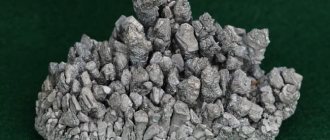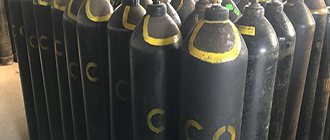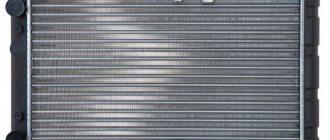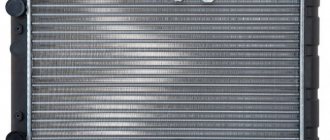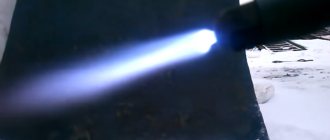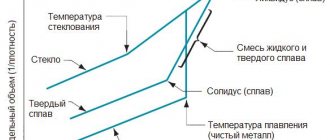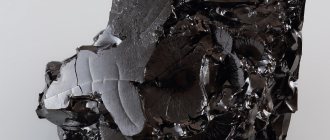| Oxygen | |
| Atomic number | 8 |
| Appearance of a simple substance | colorless, tasteless and odorless gas, bluish liquid (at low temperatures) |
| Properties of the atom | |
| Atomic mass (molar mass) | 15.9994 a. e.m. (/mol) |
| Atomic radius | 60 (48) |
| Ionization energy (first electron) | 1313.1 (13.61) kJ/mol () |
| Electronic configuration | [He] 2s2 2p4 |
| Chemical properties | |
| Covalent radius | 73 |
| Ion radius | 132 (-2e) |
| Electronegativity (Pauling) | 3,44 |
| Electrode potential | 0 |
| Oxidation states | -2, −1, 0 ,+1, +2, -½ |
| Thermodynamic properties of a simple substance | |
| Density | 0,00142897 /³ |
| Molar heat capacity | 29.4 /(mol) |
| Thermal conductivity | 0,027 /(·) |
| Melting temperature | 54,8 |
| Heat of Melting | 0.444 kJ/mol |
| Boiling temperature | 90,19 |
| Heat of vaporization | 3.4099 kJ/mol kJ/mol |
| Molar volume | 14.0 ³/mol |
| Crystal lattice of a simple substance | |
| Lattice structure | monoclinic |
| Lattice parameters | a=5.403 b=3.429 c=5.086 β=135.53 |
| c/a ratio | — |
| Debye temperature | 155 |
| O | 8 |
| 15,9994 | |
| [He]2s22p4 | |
| Oxygen | |
Oxygen
- an element of the main subgroup of the sixth group, the second period of the periodic system of chemical elements of D.I. Mendeleev, with atomic number 8. Denoted by the symbol
O
(Oxygenium).
Oxygen is a chemically active non-metal and is the lightest element of the chalcogen group. The simple substance oxygen
(CAS number: 7782-44-7) under normal conditions is a colorless, tasteless and odorless gas, the molecule of which consists of two oxygen atoms (formula O2), for which reason it is also called
dioxygen
. Liquid oxygen is light blue in color.
There are other allotropic forms of oxygen, such as ozone
(CAS number: 10028-15-6) - under normal conditions, a blue gas with a specific odor, the molecule of which consists of three oxygen atoms (formula O3).
History of discovery
Diagram of the oxygen atom
It is officially believed that oxygen was discovered by the English chemist Joseph Priestley on August 1, 1774 by decomposing mercury oxide in a hermetically sealed vessel (Priestley directed the sun's rays at this compound using a powerful lens).
2HgO(t) → 2Hg + O2↑
However, Priestley initially did not realize that he had discovered a new simple substance; he believed that he had isolated one of the constituent parts of air (and called this gas “dephlogisticated air”). Priestley reported his discovery to the outstanding French chemist Antoine Lavoisier. In 1775, A. Lavoisier established that oxygen is a component of air, acids and is found in many substances.
A few years earlier (in 1771), oxygen was obtained by the Swedish chemist Karl Scheele. He calcined saltpeter with sulfuric acid and then decomposed the resulting nitric oxide. Scheele called this gas “fire air” and described his discovery in a book published in 1777 (precisely because the book was published later than Priestley announced his discovery, the latter is considered the discoverer of oxygen). Scheele also reported his experience to Lavoisier.
An important stage that contributed to the discovery of oxygen was the work of the French chemist Peter Bayen, who published works on the oxidation of mercury and the subsequent decomposition of its oxide.
Finally, A. Lavoisier finally figured out the nature of the resulting gas, using information from Priestley and Scheele. His work was of enormous importance because thanks to it, the phlogiston theory, which was dominant at that time and hampered the development of chemistry, was overthrown. Lavoisier conducted experiments on the combustion of various substances and disproved the theory of phlogiston, publishing results on the weight of the elements burned. The weight of the ash exceeded the original weight of the element, which gave Lavoisier the right to claim that during combustion a chemical reaction (oxidation) of the substance occurs, and therefore the mass of the original substance increases, which refutes the theory of phlogiston.
Thus, the credit for the discovery of oxygen is actually shared between Priestley, Scheele and Lavoisier.
Hydrogen peroxide.
Another compound consisting only of hydrogen and oxygen is hydrogen peroxide H2O2. The name “peroxide” is adopted for compounds containing an –O–O– bond. Hydrogen peroxide has the structure of an asymmetrically bent chain:
Hydrogen peroxide is produced by the reaction of metal peroxide with acid
BaO2 + H2SO4® BaSO4 + H2O2
or by the decomposition of peroxodisulfuric acid H2S2O8, which is obtained electrolytically:
A concentrated solution of H2O2 can be obtained by special distillation methods. Hydrogen peroxide is used as an oxidizer in rocket engines. Dilute peroxide solutions serve as antiseptics, bleaches and mild oxidizing agents. H2O2 is added to many acids and oxides to produce compounds similar to hydrates. In the presence of a strong oxidizing agent (such as MnO2 or MnO4–), H2O2 oxidizes, releasing oxygen and water.
origin of name
The word oxygen
(also called “acid solution” at the beginning of the 19th century) its appearance in the Russian language is to some extent due to M.V. Lomonosov, who introduced the word “acid”, along with other neologisms;
thus, the word “oxygen”, in turn, was a tracing of the term “ oxygen
” (
l’oxygène
), proposed by A. Lavoisier (Greek όξύγενναω from ὀξύς - “sour” and γενναω - “giving birth”), which is translated as “
generating acid
", which is associated with its original meaning - "acid", which previously meant oxides, called oxides according to modern international nomenclature.
Quantity of substance
In chemistry, for the convenience of calculations, one of the most important physical quantities is used - the amount of substance. It does not refer to mass, but to the number of structural units. The unit of measurement for the quantity of a substance in the International System (SI) is 1 mole. Knowing that 1 mole includes the same number of particles as are contained in 12 g of the carbon isotope 12C, we can calculate the number of atoms, molecules, ions, electrons contained in a sample of any substance. Another constant quantity was named in honor of the great Italian scientist Avogadro (denoted NA). It characterizes the number of structural particles that a substance contains if its quantity is 1 mole. The numerical value of Avogadro's constant is 6.02. 1023 1/mol. This is the number of atoms (molecules, ions) that have a molar mass. The designation of this physical quantity is M, the unit of measurement is 1 g/mol, the formula for calculation is M = m/n (m is mass (g), n is the amount of substance (mol)).
Being in nature
Oxygen is the most common element on Earth; its share (in various compounds, mainly silicates) accounts for about 47.4% of the mass of the solid earth's crust. Sea and fresh waters contain a huge amount of bound oxygen - 88.8% (by mass), in the atmosphere the content of free oxygen is 20.95% by volume and 23.12% by mass. More than 1,500 compounds in the earth's crust contain oxygen.
Oxygen is part of many organic substances and is present in all living cells. In terms of the number of atoms in living cells, it is about 25%, and in terms of mass fraction - about 65%.
How do you find the molar mass of an element or substance?
When performing chemical calculations, you need to know the masses of the atoms and molecules of the substances participating in the reactions. But they are too small, making it difficult to use units such as grams and kilograms. A solution was found: other quantities were proposed to facilitate calculations. For example, in chemistry, relative values of atomic and molecular masses are used. Relative atomic mass (Ar) as a physical quantity was introduced in 1961. Its value is equal to 1/12 of the mass of a carbon atom (12C isotope).
To perform calculations using formulas and equations using this and other quantities, you need to remember several rules:
- The mass of an atom is indicated in the periodic table next to the chemical symbol. Molar mass has the same numerical value, but with units of g/mol.
- The mass of one mole of a substance is determined by the formula of the compound, for which the sum of the molar masses of all particles in the molecule is found.
- If the chemical formula contains an index indicating the number of structural units, then it is necessary to multiply the molar mass by this coefficient.
Receipt
Currently, in industry, oxygen is obtained from the air. Laboratories use industrially produced oxygen, supplied in steel cylinders under a pressure of about 15 MPa. The most important laboratory method for its production is electrolysis of aqueous solutions of alkalis. Small amounts of oxygen can also be obtained by reacting a solution of potassium permanganate with an acidified solution of hydrogen peroxide. Oxygen plants operating on the basis of membrane and nitrogen technologies are also well known and successfully used in industry. When heated, potassium permanganate KMnO4 decomposes to potassium manganate K2MnO4 and manganese dioxide MnO2 with the simultaneous release of oxygen gas O2:
2KMnO4 → K2MnO4 + MnO2 + O2↑
In laboratory conditions it is also obtained by the catalytic decomposition of hydrogen peroxide H2O2:
2H2O2 → 2H2O + O2↑
The catalyst is manganese dioxide (MnO2) or a piece of raw vegetables (they contain enzymes that accelerate the decomposition of hydrogen peroxide).
Oxygen can also be obtained by the catalytic decomposition of potassium chlorate (Berthollet salt) KClO3:
2KClO3 → 2KCl + 3O2↑
MnO2 also acts as a catalyst.
Oxygen - the distribution of oxygen in nature and the production
Oxygen is an element (O), oxygen is a simple substance (), air
In the form of a simple substance, oxygen is part of the air, which was first established in 1770 by the Swedish chemist K. Scheele. The volumetric oxygen content in the air is 21%. This value (rounded to the nearest 20%) is often used in problem solving. In the earth's crust, chemical compounds contain about 49% oxygen. This can be seen from the formulas of the following natural compounds: - water, - sand, - clay, - marble, etc. Oxygen is also part of the most important organic compounds of living organisms: proteins, lipids, carbohydrates, etc.
In D.I. Mendeleev’s Periodic Table, oxygen is in 8th place, the chemical sign is O (oxygenium). Relative atomic mass is 16. Oxygen in compounds exhibits valency II.
Structure of the oxygen atom:
The air contains, in addition to oxygen, nitrogen - 78%; approximately 1% are inert gases (helium, neon, argon, etc.), which was established by scientists at the end of the 19th century. These are permanent components of air. There are also variable components - polluting gases, the composition of which depends on local conditions (≈ 1%). These include carbon dioxide and water vapor. Thus, air is a mixture of gases.
The mass fraction of oxygen in the air is 23%. The supply of oxygen in the air is t, of which t is spent on combustion.
The amount of oxygen in the air is constantly decreasing under the influence of various technogenic factors, which depend on the economic orientation of each specific region. At the same time, the oxygen content in the air is replenished due to the process of photosynthesis, which occurs continuously, so the composition of the air remains approximately constant (Fig. 28).
The environmental situation in our republic, primarily in industrial cities, is deteriorating from year to year (Ust-Kamenogorsk, Pavlodar, Taraz, Shymkent, Karaganda, Tekeli, etc.). This process is also enhanced by an increase in the number of cars.
Up to a certain limit, variable air components do not affect the environment. This amount is called the maximum permissible concentration (MPC). If the content of harmful impurities exceeds the maximum permissible concentration, there is a danger of poisoning, etc. The human body feels a decrease in oxygen concentration by more than 1%.
Scientists around the world are working hard to create the latest environmentally friendly technologies, because air determines the very possibility of life on Earth.
You are already familiar with oxidation reactions - the processes of interaction of simple and complex substances with oxygen.
As a chemical element, oxygen forms two simple substances: oxygen and ozone.
From your biology course, you already know that during photosynthesis, plants absorb carbon dioxide and release oxygen, which we breathe. Plants are the “lungs” of the planet. Therefore, it is no coincidence that people say: “Everyone should grow at least one tree.” In recent years, several hundred thousand seedlings have been planted annually in Kazakhstan under the Zhasyl El program. For example, Astana is surrounded by several green belts. Their area reached 78 thousand hectares. These measures help improve air composition.
Physical properties
Oxygen is a colorless gas, tasteless and odorless, boiling point – 183°C, density 1.43 g/l, heavier than air. Slightly soluble in water: 0.04 g of oxygen dissolves in 1 liter of water under normal conditions (Table 9).
Obtaining oxygen
The industrial method of producing oxygen involves liquefying air at low temperatures and distilling it. First, nitrogen gas is distilled from liquid air (its boiling point is lower than that of oxygen). Almost pure oxygen remains in the liquid state. It is stored in blue cylinders, since liquid oxygen has a light blue color (Fig. 29).
Laboratory methods for producing oxygen are based on the decomposition reactions of certain oxygen-rich substances.
1. Decomposition of potassium permanganate. Pour a little substance into a dry test tube and, closing the test tube with a stopper with a gas outlet tube, carefully heat it. In this case, a chemical reaction occurs:
2. Catalytic decomposition of hydrogen peroxide (Fig. 30).
Using a smoldering splinter, we check that the test tube is filled with oxygen. If you bring it to the hole in the tube, it will burst into flames.
3. Catalytic decomposition of potassium chlorate.
To speed up this reaction, add a little manganese (IV) oxide to the chlorate and heat it. Substances that speed up a reaction without being consumed are called catalysts.
The released oxygen can be collected in two ways:
1) by displacing air, since oxygen is heavier (Fig. 31, a): 2) by displacing water, since it is poorly soluble in water (Fig. 31, b).
In 1774, the English scientist D. Priestley obtained oxygen by decomposition of mercury (II) oxide:
A gasometer is used to store gases in laboratories (Fig. 32). The gasometer consists of a vessel and a large funnel, the end of which does not reach the bottom of the vessel. A funnel equipped with a tap is inserted into the vessel on a joint that ensures the tightness of the device. Before filling the gasometer with gas, the air is displaced from it with water. To do this, open taps 1 and 2. Pour water through funnel 3 and fill the gasometer to the top. Then close both taps, remove the plug from tube 4 and insert the end of the gas outlet tube from the device into the gas meter. The gas enters the gasometer, displacing water from it, which is poured into a glass bathtub or sink. After filling the gasometer with gas, close the lower hole 4 with a stopper and pour water into funnel 3. To release gas from the gasometer, open tap 1 and slightly open tap 2. In this case, water from the funnel enters the vessel and displaces gas from it, which exits through the gas outlet tube and can be directed into a receiving vessel.
The gasometer can store gases that are slightly soluble in water and do not interact with it. Explosive gases must not be stored in the gas meter.
Demonstration No. 4 Decomposition of hydrogen peroxide
The teacher conducts the experiment, students observe and draw conclusions. Goal : To be able to obtain oxygen and collect it in two ways.
1. Secure a heat-resistant test tube vertically in the rack clamp.
2. Take a small amount of hydrogen peroxide solution into a test tube and add pre-prepared manganese dioxide powder into the test tube.
3. Place a smoldering splinter into the test tube. Then close the test tube with a stopper with a gas outlet tube. The experiment can be carried out in a heat-resistant glass (Fig. 33).
Physical properties
Cold water contains more dissolved O2.
Under normal conditions, oxygen is a colorless, tasteless, and odorless gas. 1 liter of it weighs 1.429 g. Slightly heavier than air. Slightly soluble in water (4.9 ml/100g at 0 °C, 2.09 ml/100g at 50 °C) and alcohol (2.78 ml/100g at 25 °C). It dissolves well in molten silver (22 volumes of O2 in 1 volume of Ag at 961 °C). Is paramagnetic.
When gaseous oxygen is heated, its reversible dissociation into atoms occurs: at 2000 °C - 0.03%, at 2600 °C - 1%, 4000 °C - 59%, 6000 °C - 99.5%.
Liquid oxygen (boiling point −182.98 °C) is a pale blue liquid.
O2 phase diagram
Solid oxygen (melting point −218.79 °C) - blue crystals. Six crystalline phases are known, three of which exist at a pressure of 1 atm:
α-O2
— exists at temperatures below 23.65 K;
bright blue crystals belong to the monoclinic system, cell parameters a=5.403 Å, b=3.429 Å, c=5.086 Å; β=132.53°. β-O2
- exists in the temperature range from 23.65 to 43.65 K;
pale blue crystals (with increasing pressure the color turns pink) have a rhombohedral lattice, cell parameters a=4.21 Å, α=46.25°. γ-O2
- exists at temperatures from 43.65 to 54.21 K; pale blue crystals have cubic symmetry, lattice parameter a=6.83 Å.
Three more phases are formed at high pressures:
δ-O2,
temperature range up to 300 K and pressure 6-10 GPa, orange crystals;
ε-O2
pressure from 10 to 96 GPa, crystal color from dark red to black, monoclinic system;
ζ-O2
pressure is more than 96 GPa, a metallic state with a characteristic metallic luster, at low temperatures it transforms into a superconducting state.
What is the molar mass of oxygen?
In practice, there is no need to use the formula M = m/n to calculate the molar mass of oxygen. When solving problems, you often need to determine what the mass is or find the amount of a substance. In the first case, the formula m = n is used for calculations. M, in the second - n = m/M. The numerical value of the molar mass of an element coincides with the mass of an atom, and for a substance - a molecule. For example, 1 mole of the element oxygen has a mass of 16 g. M (O2) is the molar mass of an oxygen molecule, which is equal to 32 g/mol.
Chemical properties
A strong oxidizing agent that interacts with almost all elements, forming oxides
. Oxidation state −2. As a rule, the oxidation reaction proceeds with the release of heat and accelerates with increasing temperature. Example of reactions occurring at room temperature: 4K + O2 → 2K2O 2Sr + O2 → 2SrO
Oxidizes compounds that contain elements with less than the maximum oxidation state: 2NO + O2 → 2NO2
Oxidizes most organic compounds: CH3CH2OH + 3O2 → 2CO2 + 3H2O
Under certain conditions, it is possible to carry out mild oxidation of an organic compound: CH3CH2OH + O2 → CH3COOH + H2O
Oxygen does not oxidize halogens and inert gases.
Oxygen forms
peroxides with an oxidation state of −1.
— For example, peroxides are obtained by combustion of alkali metals in oxygen: 2Na + O2 → Na2O2
— Some oxides absorb oxygen: 2BaO + O2 → 2BaO2
— According to the principles of combustion developed by A. N. Bach and K. O. Engler, oxidation occurs in two stages with the formation of an intermediate peroxide compound. This intermediate compound can be isolated, for example, when a flame of burning hydrogen is cooled with ice, along with water, hydrogen peroxide is formed: H2 + O2 → H2O2
Superoxides
have an oxidation state of −1/2, that is, one electron per two oxygen atoms (O2- ion). Obtained by reacting peroxides with oxygen at elevated pressures and temperatures: Na2O2 + O2 → 2NaO2
Ozonides
contain an O3- ion with an oxidation state of −1/3. Obtained by the action of ozone on alkali metal hydroxides: KOH(solid) + O3 → СО3 + KOH + O2
Dioxygenyl ion
O2+ has an oxidation state of +1/2. Obtained by the reaction: PtF6 + O2 → O2PtF6
Oxygen fluorides
Oxygen difluoride
, OF2 oxidation state +2, is obtained by passing fluorine through an alkali solution: 2F2 + 2NaOH → OF2 + 2NaF + H2O
Oxygen monofluoride
(
Dioxydifluoride
), O2F2, unstable, oxidation state +1. It is obtained from a mixture of fluorine and oxygen in a glow discharge at a temperature of −196 °C.
By passing a glow discharge through a mixture of fluorine and oxygen at a certain pressure and temperature, mixtures of higher oxygen fluorides O3F2, O4F2, O5F2 and O6F2 are obtained. Oxygen supports the processes of respiration, combustion, and decay. In its free form, the element exists in two allotropic modifications: O2 and O3 (ozone).
Molecular oxygen.
Like most other elements, the atoms of which lack 1–2 electrons to complete the outer shell of 8 electrons, oxygen forms a diatomic molecule. This process releases a lot of energy (~490 kJ/mol) and, accordingly, the same amount of energy must be spent for the reverse process of dissociation of the molecule into atoms. The strength of the O–O bond is so high that at 2300° C only 1% of oxygen molecules dissociate into atoms. (It is noteworthy that during the formation of the nitrogen molecule N2, the strength of the N–N bond is even higher, ~710 kJ/mol.)
Application of oxygen
The widespread industrial use of oxygen began in the middle of the 20th century, after the invention of turboexpanders - devices for liquefying and separating liquid air.
In metallurgy
The converter method of steel production involves the use of oxygen.
Welding and cutting of metals
Oxygen in cylinders is widely used for flame cutting and welding of metals.
Rocket fuel
Liquid oxygen, hydrogen peroxide, nitric acid and other oxygen-rich compounds are used as oxidizers for rocket fuel. A mixture of liquid oxygen and liquid ozone is one of the most powerful oxidizers of rocket fuel (the specific impulse of the hydrogen-ozone mixture exceeds the specific impulse for the hydrogen-fluorine and hydrogen-oxygen fluoride pairs).
In medicine
Oxygen is used to enrich respiratory gas mixtures for breathing problems, for the treatment of asthma, in the form of oxygen cocktails, oxygen pillows, etc.
In the food industry
In the food industry, oxygen is registered as a food additive E948
, as propellant and packaging gas.
Characteristics of oxygen
O2 characteristics are presented in the tables below:
Conversion coefficient for volume and mass of O2 at T=15°C and P=0.1 MPa
| Weight, kg | Volume | |
| Gas, m3 | Liquid, l | |
| 1,337 | 1 | 1,172 |
| 1,141 | 0,853 | 1 |
| 1 | 0,748 | 0,876 |
Conversion factors for volume and mass of O2 at T=0°C and P=0.1 MPa
| Weight, kg | Volume | |
| Gas, m3 | Liquid, l | |
| 1,429 | 1 | 1,252 |
| 1,141 | 0,799 | 1 |
| 1 | 0,700 | 0,876 |
Oxygen in a cylinder
| Name | Cylinder volume, l | Mass of gas in the cylinder, kg | Gas volume (m3) at T=15°C, P=0.1 MPa |
| O2 | 40 | 8,42 | 6,3 |
Thanks to this table, you can now easily answer questions that welders often ask:
- How much oxygen is in the cylinder per m3? Answer: in a 40 liter cylinder there are 6.3 m3
- How much oxygen is in the cylinder? Answer: in a 40 liter cylinder there are 6.3 m3 or 8.42 kg
- How much does an oxygen cylinder weigh? Answer: 58.5 kg - the mass of an empty carbon steel cylinder according to GOST 949; 8.42 - kg mass of oxygen in the cylinder; Total: 58.5 + 8.42 = 69.92 kg weight of the oxygen cylinder.
In order to approximately find out how much oxygen is in the cylinder, you need to multiply the capacity of the cylinder (m3) by the pressure (MPa). For example, if the capacity of the cylinder is 40 liters (0.04 m3), and the gas pressure is 15 MPa, then the volume of oxygen in the cylinder is 0.04 × 15 = 6 m3.
Biological role of oxygen
Living things breathe oxygen from the air. Oxygen is widely used in medicine. In case of cardiovascular diseases, to improve metabolic processes, oxygen foam (“oxygen cocktail”) is injected into the stomach. Subcutaneous administration of oxygen is used for trophic ulcers, elephantiasis, gangrene and other serious diseases. Artificial ozone enrichment is used to disinfect and deodorize air and purify drinking water. The radioactive oxygen isotope 15O is used to study blood flow speed and pulmonary ventilation.
Atomic and molecular mass of oxygen
The mass of the oxygen atom was obtained taking into account the number and distribution of its three natural isotopes: Ar (O) = 15.999 (in amu). In calculations, this value is usually rounded, resulting in 16. For each element, its atomic mass is a constant value. From the known mass of atoms of an element with atomic number 8, the molar mass of the element oxygen can be found. M(O) = 16. Another dimensionless physical quantity - the molecular mass of oxygen - refers to a simple substance. Calculate the mass of an oxygen molecule by multiplying the mass of the atom by the stoichiometric coefficient in the formula: Mr(O2) = Ar (O). 2 = 16. 2 = 32. In practice, there is no need to find out what the molar mass of oxygen is, because its value is numerically equal to the mass of the molecule of the substance, but with the unit g/mol. For a particular compound, its molecular weight is a constant value and is widely used in calculating the amount and mass of a substance.
Isotopes of oxygen
Oxygen has three stable isotopes: 16O, 17O and 18O, the average content of which is, respectively, 99.759%, 0.037% and 0.204% of the total number of oxygen atoms on Earth. The sharp predominance of the lightest of them, 16O, in the mixture of isotopes is due to the fact that the nucleus of the 16O atom consists of 8 protons and 8 neutrons. And such nuclei, as follows from the theory of the structure of the atomic nucleus, are particularly stable.
There are radioactive isotopes 11O, 13O, 14O (half-life 74 sec), 15O (T1/2=2.1 min), 19O (T1/2=29.4 sec), 20O (conflicting data on half-life from 10 min to 150 years).
Oxygen
At standard temperature and pressure, oxygen is a colorless, tasteless, odorless gas with the molecular formula O2, called dioxide. As a dioxide, oxygen has two atoms chemically bonded to each other. This bond can be described in many different ways based on the level of theory, but is sensibly and simply described as a covalent double bond that results from the filling of molecular orbitals formed from the atomic orbitals of individual oxygen atoms, the filling of which results in a bond of order two. More specifically, a double bond results from sequential, low and high energy or Aufbau filling orbitals and, as a consequence, canceling the contributions of two electrons after sequential filling of low σ and σ* orbitals; σ overlap of two atomic 2p orbitals lying along the OO molecular axis and forming a π overlap of two pairs of atomic 2p orbitals perpendicular to the OO molecular axis, and then canceling contributions from the remaining two of the six 2p electrons after they are partially filled by the smallest π- and π*-orbitals [24]. This combination of σ and π overlap cancellation results in the dioxide's double-binding nature and reactivity and triplet electronic ground state. The configuration of electrons with two unpaired electrons found in biaxial orbitals of equal energy is a configuration called the spin triplet state. Therefore, the ground state of the O2 molecule is called triplet oxygen. At the highest energy, partially filled orbitals are antibonding, and therefore filling them weakens the bond order from three to two. Because of its unpaired electrons, triplet oxygen reacts slowly with most organic molecules, which have paired electron spins; this prevents spontaneous combustion. In triplet form, O2 molecules are paramagnetic. That is, they impart a magnetic character to oxygen when it is in the presence of a magnetic field, due to the spin magnetic moments of the unpaired electrons in the molecule and the negative exchange energy between neighboring O2 molecules. Liquid oxygen is so magnetic that in laboratory demonstrations, a bridge of liquid oxygen can be supported against its own weight between the poles of a powerful magnet. 10) Singlet oxygen is the name given to several higher energy species of molecular O2 in which all electron spins are paired. It is much more reactive with common organic molecules than molecular oxygen itself. In nature, singlet oxygen is usually formed from water during photosynthesis using the energy of sunlight. It is also formed in the troposphere by photolysis of ozone by short wavelength light and the immune system as a source of active oxygen. Carotenoids in photosynthetic organisms (and possibly animals) play an important role in absorbing energy from singlet oxygen and converting it to an unexcited ground state before it can cause tissue damage. eleven)
